Maritime annual incident figures 2022
See our annual incident figures analysis with global trends and developments in maritime piracy, armed robbery and hostile incidents, revealing a shift in perpetrators’ focus as well as types of incidents in many of the world’s high risk areas. To download these insights a slidedeck, please sign up at the bottom of any of the posts below.
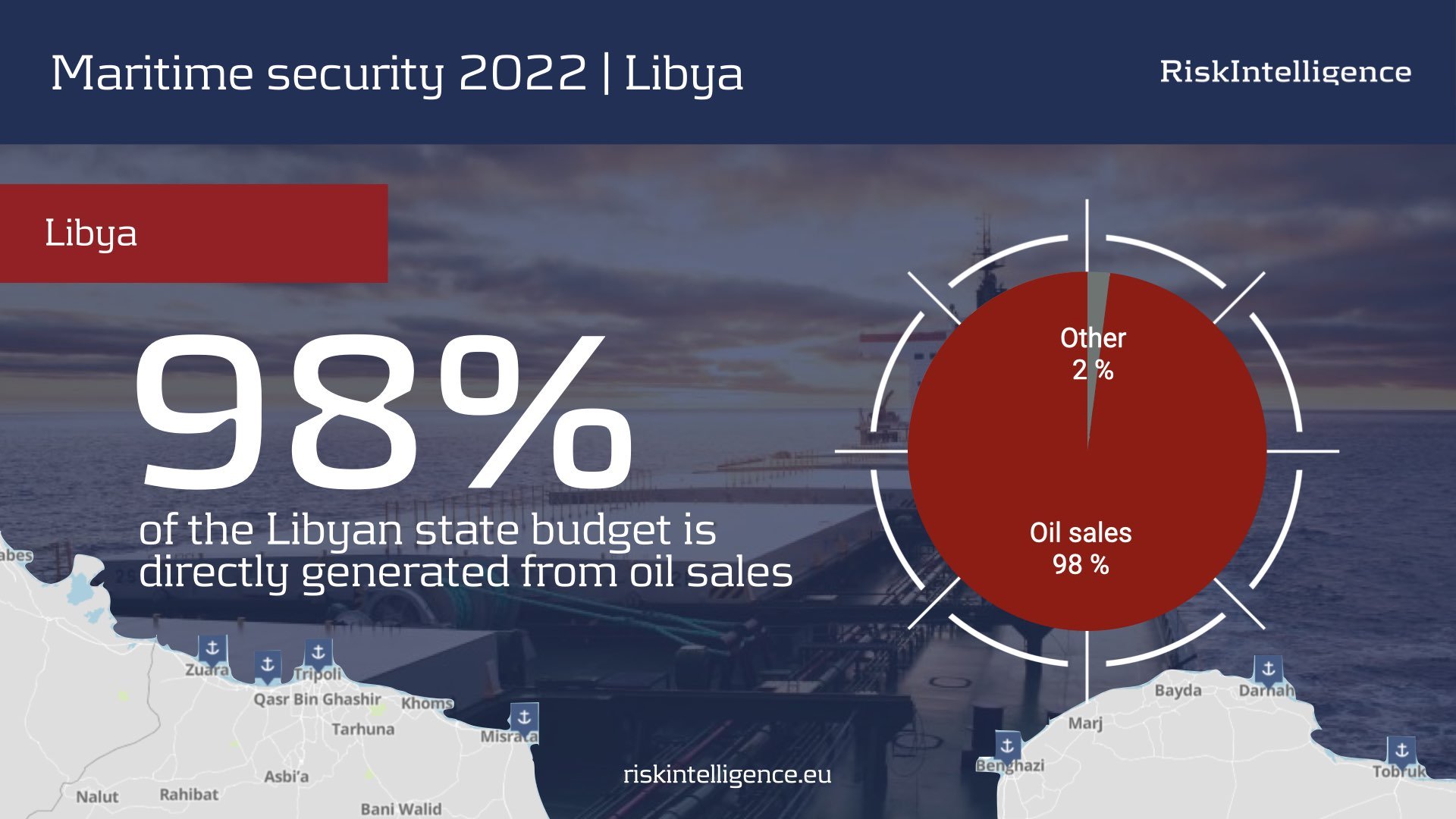
98% of the Libyan state budget is directly generated from oil sales
Libyan oil sector resilient and able to operate under difficult conditions;
98% of Libyan state budget, with 23 billion USD sales in 2021;
Periodic instability leads to export stoppages;
Political factions prevent exports to put pressure on their adversaries;
Instability driven by militia-based politics;
Instability also driven by labour movements against harsh conditions and irregular pay.
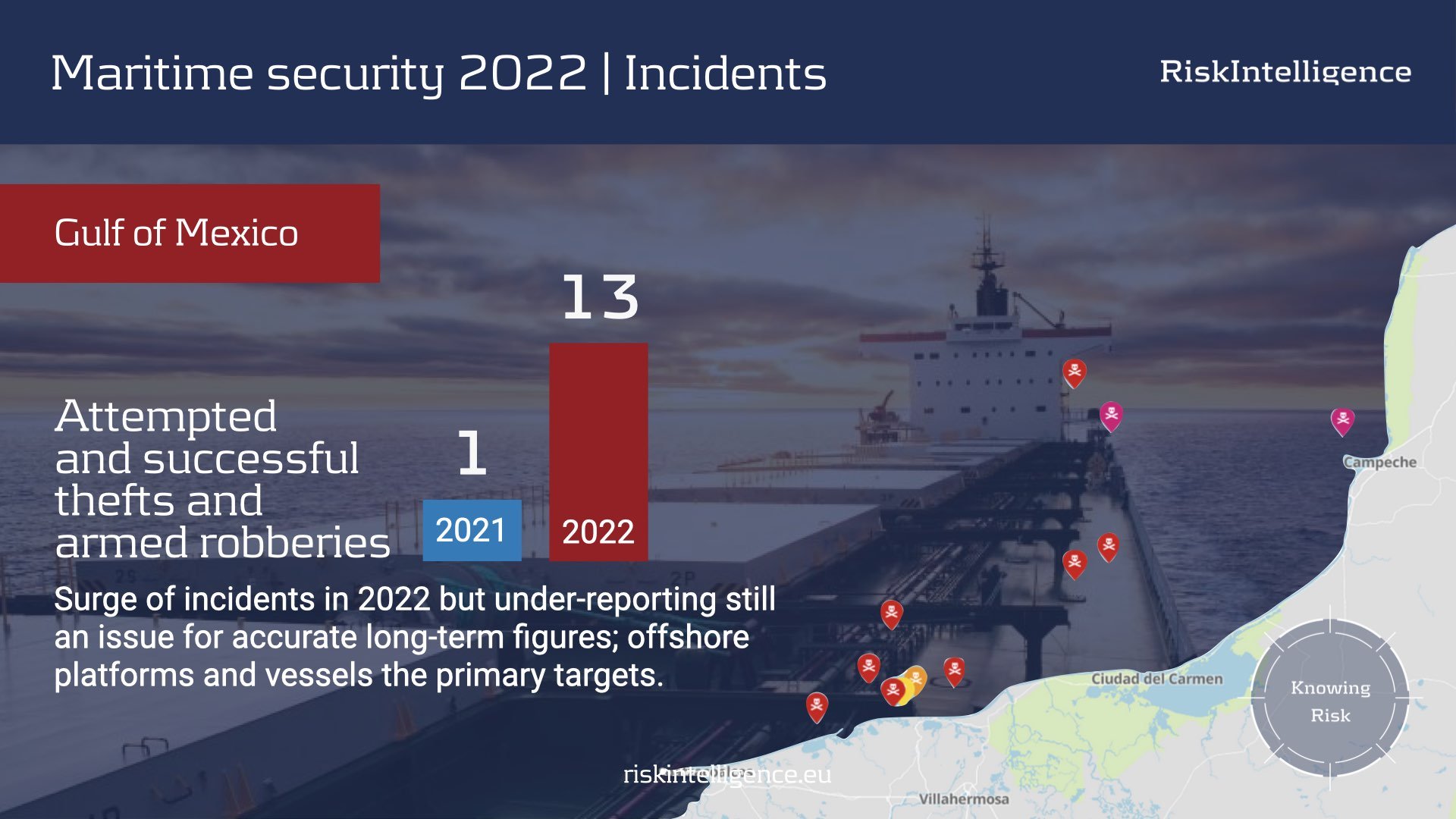
Theft and armed robbery in Gulf of Mexico
Numbers tend to shift dependent on various local factors, such as general crime patterns and law enforcement. Some hot spots have shifted (no incidents in Ecuador, for example) but difficult to know if these are permanent shifts.
In the Gulf of Mexico, under-reporting makes it difficult to accurately track incidents and to make conclusions on long-term trends. But there does appear to have been a surge in 2022 as criminals have become bolder, targeting vessels and platforms. There is definitely a level of criminality taking place for armed robbery, targeting equipment for black market re-sale. Not particular concerns with the threat expanding, such as into kidnapping or hijacking, at this time.

The Caribbean and South America continue to be hotspots for theft and armed robbery
Numbers tend to shift dependent on various local factors, such as general crime patterns and law enforcement. Some hot spots have shifted (no incidents in Ecuador, for example) but difficult to know if these are permanent shifts.
In the Gulf of Mexico, under-reporting makes it difficult to accurately track incidents and to make conclusions on long-term trends. But there does appear to have been a surge in 2022 as criminals have become bolder, targeting vessels and platforms. There is definitely a level of criminality taking place for armed robbery, targeting equipment for black market re-sale. Not particular concerns with the threat expanding, such as into kidnapping or hijacking, at this time.

Shift in the threat area to the Gulf of Oman and Gulf of Aden
From the Red Sea to the Persian Gulf through the Gulf of Aden and Gulf of Oman and including the Somali Basin, the main threats in 2022 were from regional conflicts (military/political) having maritime implications: primarily Yemen and Iran.
Yemen: Possible collateral damage to vessels from drone attacks against port/terminal facilities. After a suspension of attacks in the middle of the year, due to an agreed ceasefire, Houthi drone attacks resumed in October and November targeting southern Yemen. If the trend in Q4 continues, there could be fewer attacks at least in early 2023, but vessel operations could be affected in locations dependent on Houthi targeting choices.
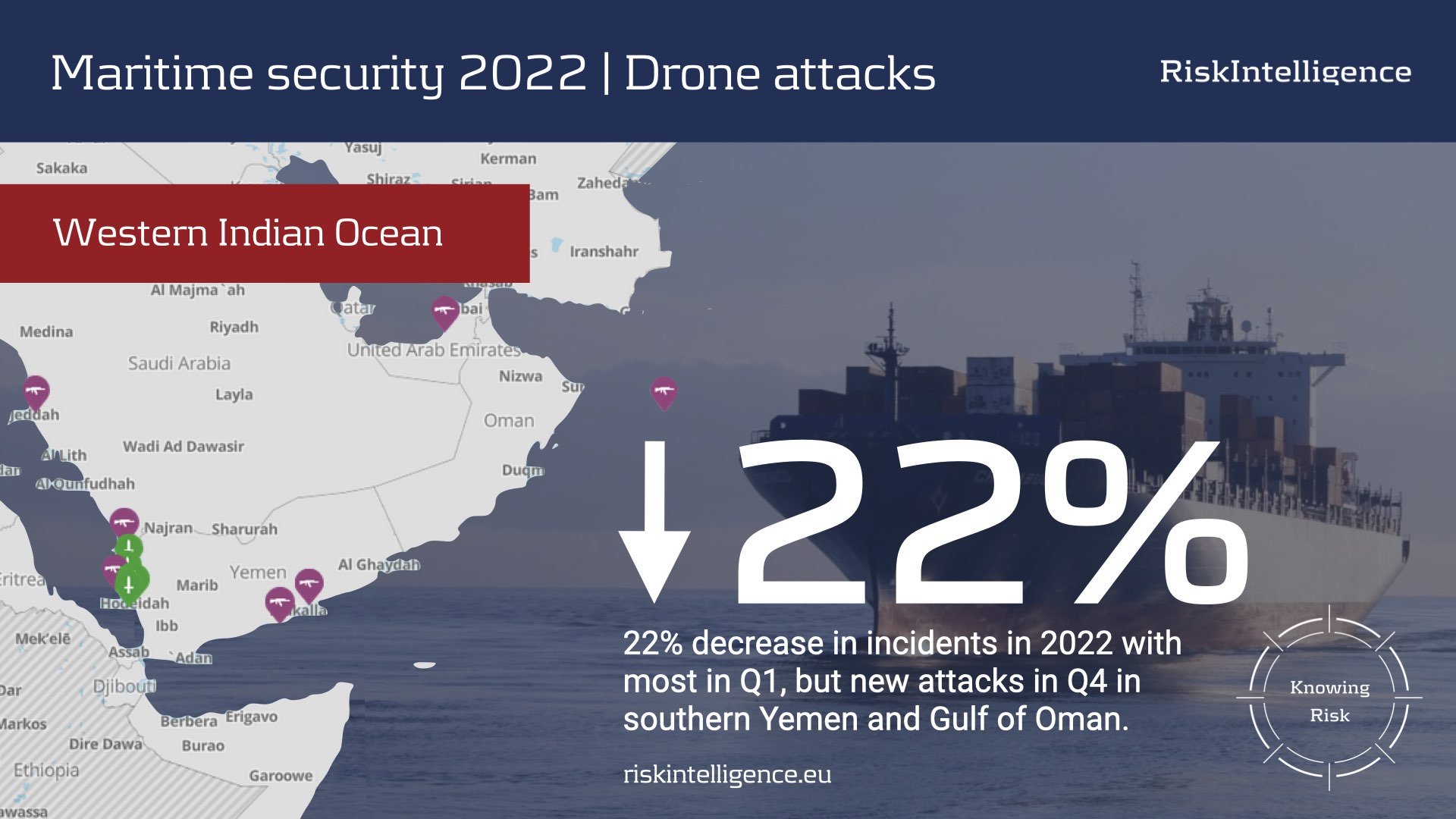
Western Indian Ocean - 22% decrease in aerial and waterborne drone attacks
From the Red Sea to the Persian Gulf through the Gulf of Aden and Gulf of Oman and including the Somali Basin, the main threats in 2022 were from regional conflicts (military/political) having maritime implications: primarily Yemen and Iran.
Yemen: Possible collateral damage to vessels from drone attacks against port/terminal facilities. After a suspension of attacks in the middle of the year, due to an agreed ceasefire, Houthi drone attacks resumed in October and November targeting southern Yemen. If the trend in Q4 continues, there could be fewer attacks at least in early 2023, but vessel operations could be affected in locations dependent on Houthi targeting choices.
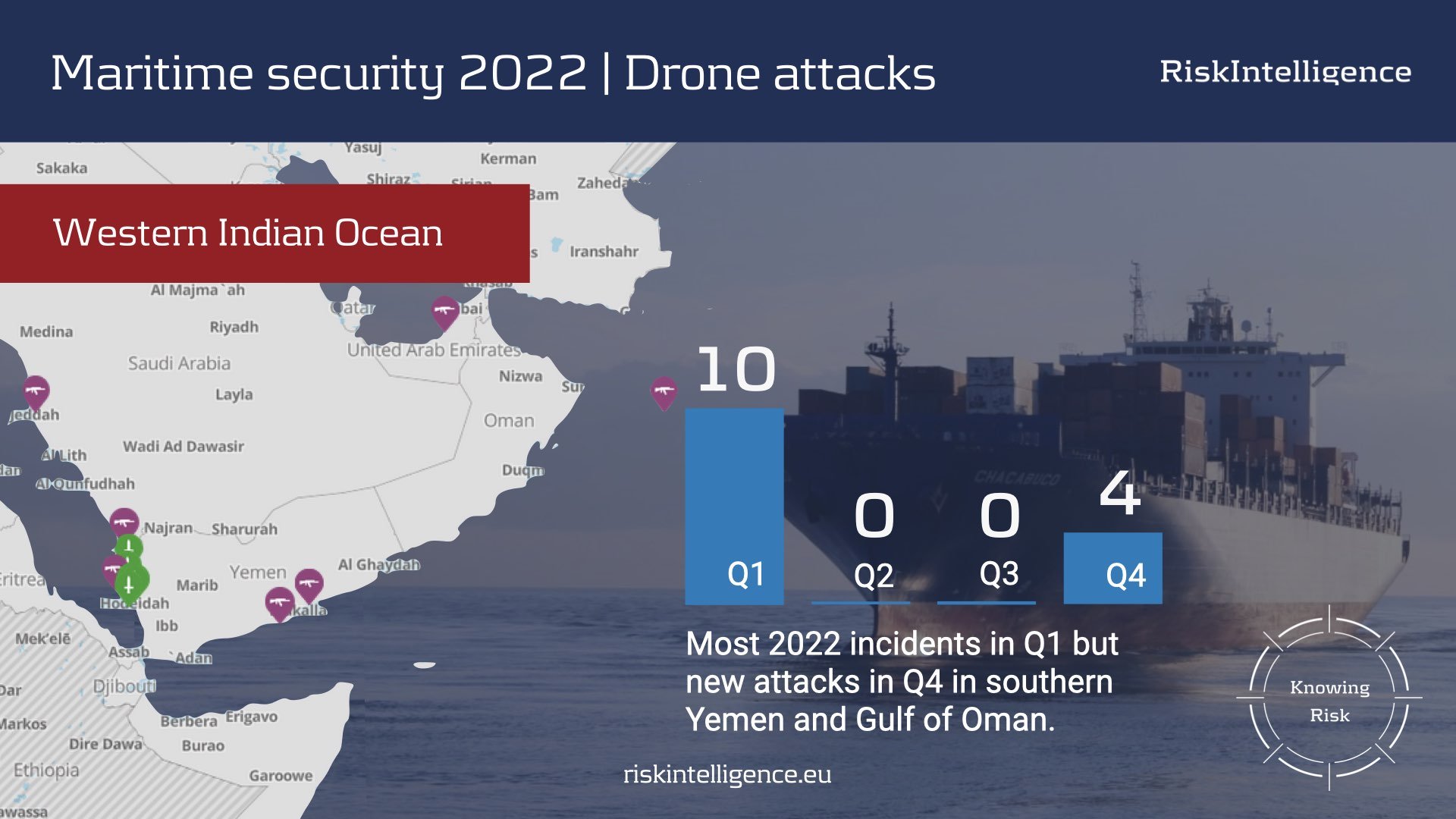
Drone attacks in the Western Indian Ocean
From the Red Sea to the Persian Gulf through the Gulf of Aden and Gulf of Oman and including the Somali Basin, the main threats in 2022 were from regional conflicts (military/political) having maritime implications: primarily Yemen and Iran.
Yemen: Possible collateral damage to vessels from drone attacks against port/terminal facilities. After a suspension of attacks in the middle of the year, due to an agreed ceasefire, Houthi drone attacks resumed in October and November targeting southern Yemen. If the trend in Q4 continues, there could be fewer attacks at least in early 2023, but vessel operations could be affected in locations dependent on Houthi targeting choices.
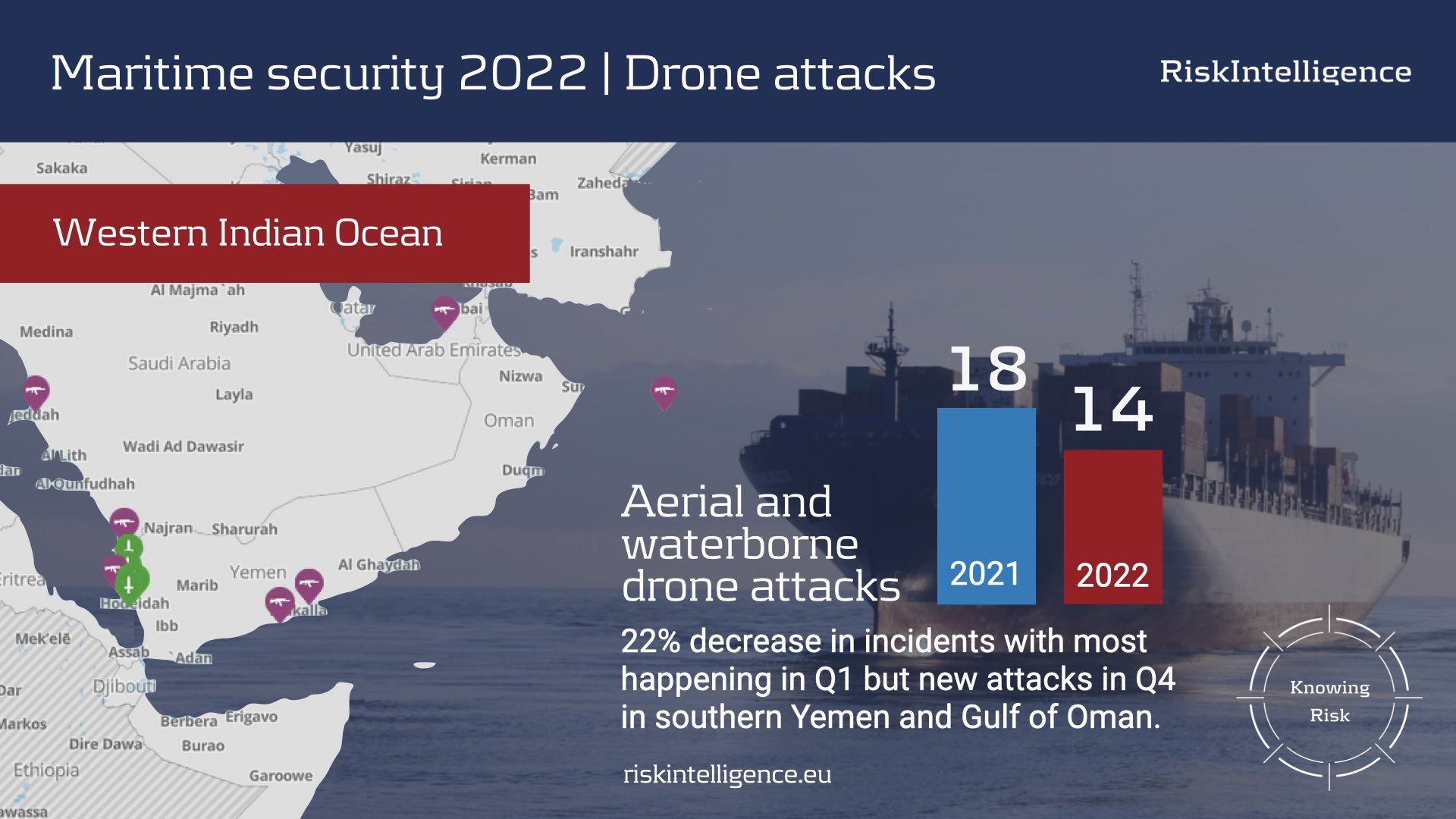
Aerial and waterborne drone attacks in the Western Indian Ocean
From the Red Sea to the Persian Gulf through the Gulf of Aden and Gulf of Oman and including the Somali Basin, the main threats in 2022 were from regional conflicts (military/political) having maritime implications: primarily Yemen and Iran.
Yemen: Possible collateral damage to vessels from drone attacks against port/terminal facilities. After a suspension of attacks in the middle of the year, due to an agreed ceasefire, Houthi drone attacks resumed in October and November targeting southern Yemen. If the trend in Q4 continues, there could be fewer attacks at least in early 2023, but vessel operations could be affected in locations dependent on Houthi targeting choices.
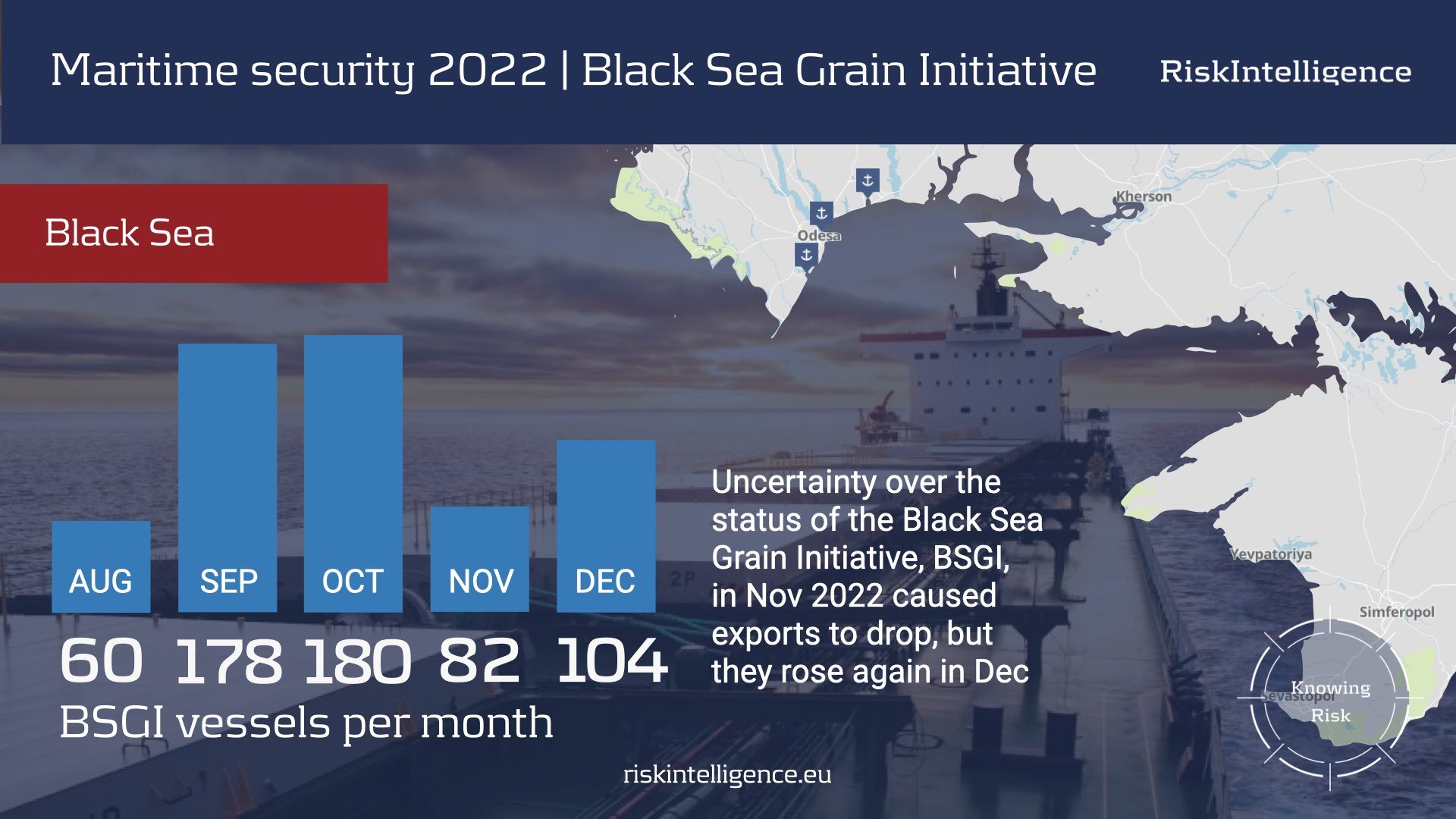
Uncertainty over the status of the Black Sea Grain Initiative (BSGI)
While exports needed some time to pick up from the initiation of the Black Sea Grain Initiative (BSGI) in early August 2022, September and October saw strong numbers. However, uncertainty over the status of the BSGI, the Russian pullout of the deal over Ukraine strikes on Sevastopol, and the doubt over the extension, saw fewer transits and exports in November. Following the extension in mid-November, exports rose again in December.
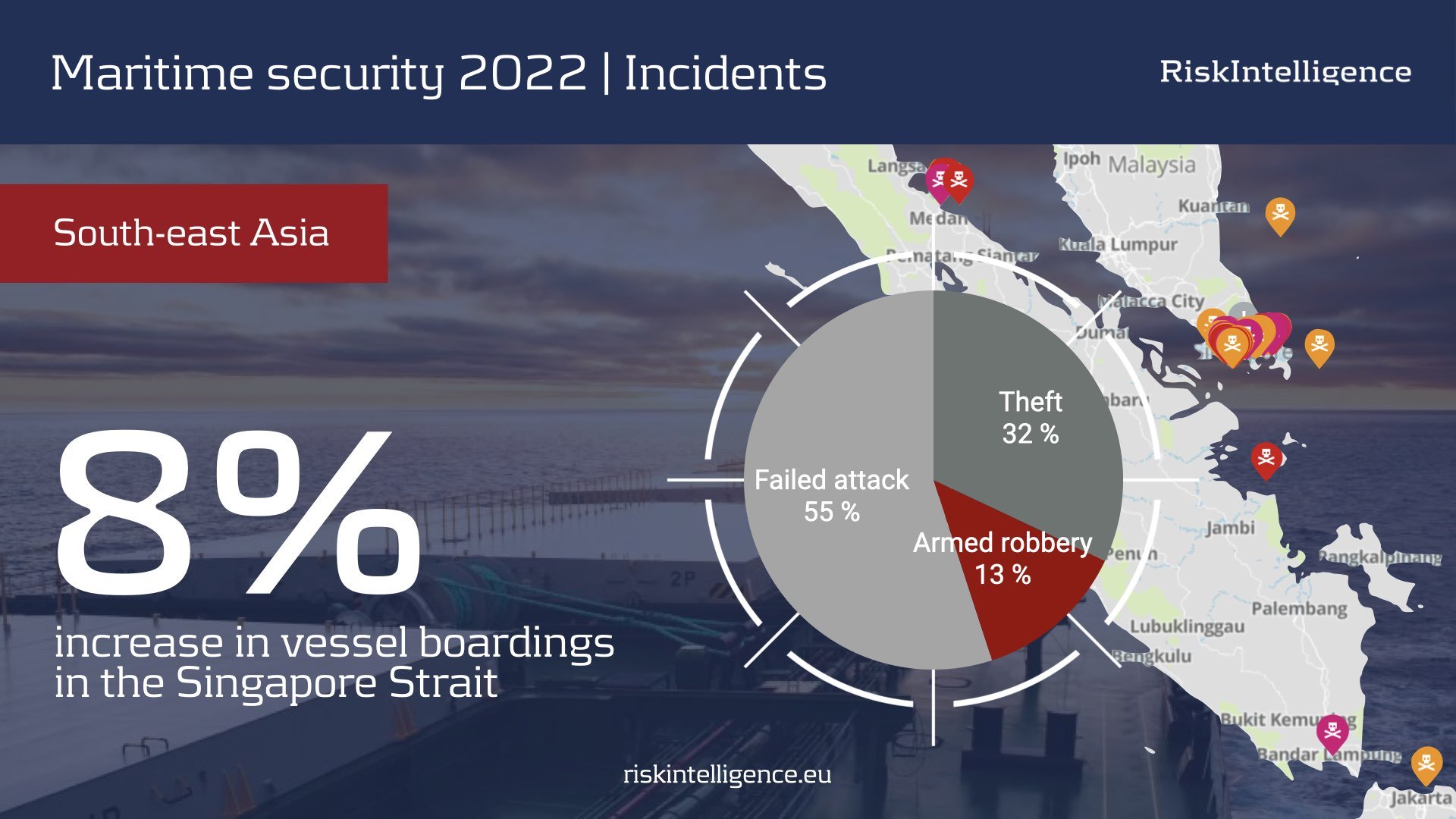
Incidents in the Singapore Strait up by 8%
At face value the 8% increase in the total number of incidents recorded in the Singapore Strait is worrisome, however, it should be noted that 55% of these incidents were failed attacks.
Additional encouraging trends include the decrease of armed robberies from 20% in 2021 to 13% in 2022 and the infrequent cases of crew sustaining injuries during attacks. The perpetrators’ continued focus on bulk carriers and tankers is expected to continue.
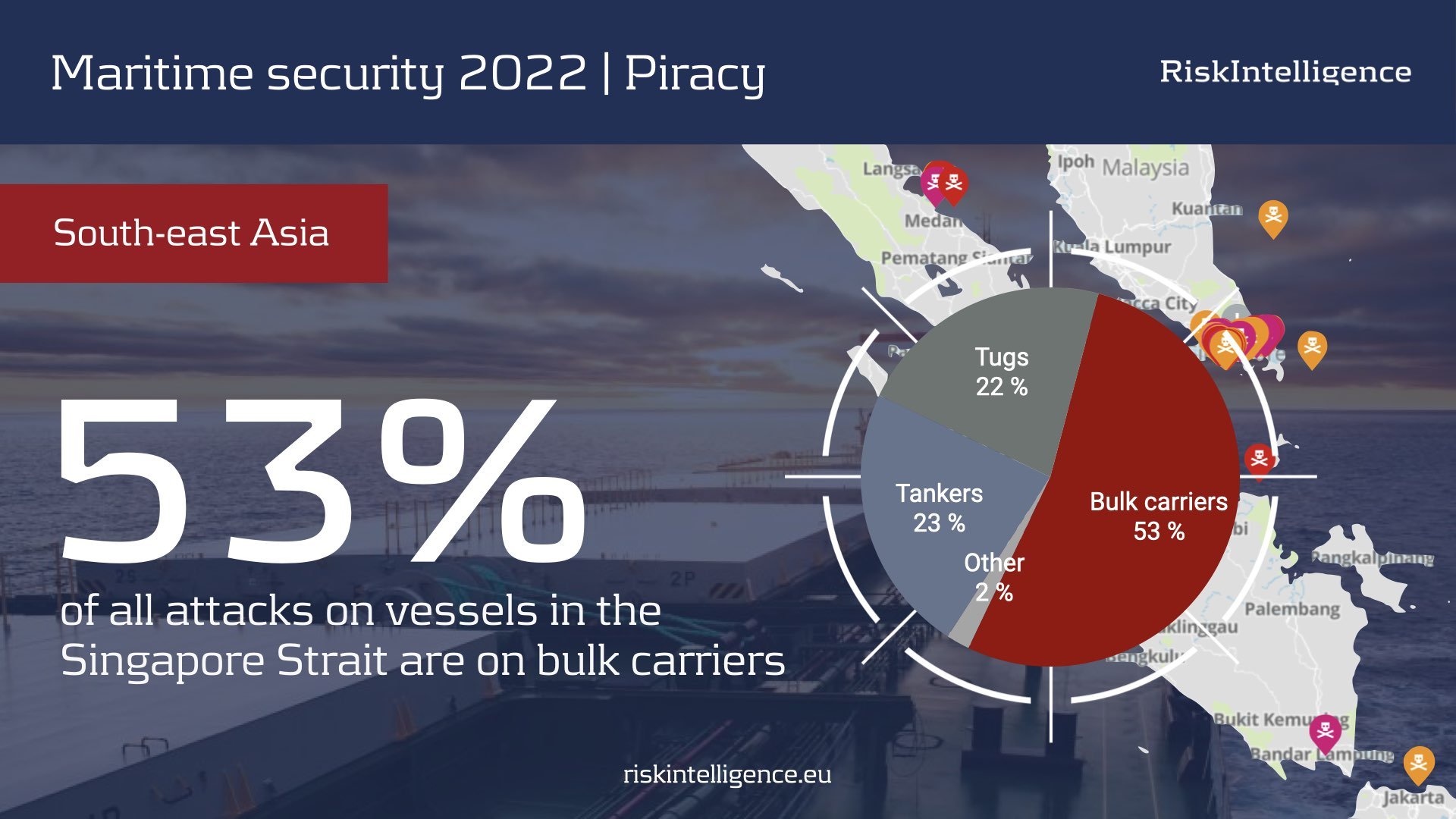
Singapore Strait: Bulk carriers most vulnerable in 2022
Operators of bulk carriers are well-advised to ensure enhanced awareness amongst crew on board vessels approaching the Singapore Strait for transit.
With an overall 8% year-on-year increase in the total number of incidents recorded in the strait, perpetrators maintained their attention on bulk carriers, which accounted for 53% of all Singapore Strait boardings while tankers accounted for 23% of all boardings.

43% of vessels transiting via the BSGI shipping route called on Chronomorsk
While exports needed some time to pick up from the initiation of the Black Sea Grain Initiative (BSGI) in early August 2022, September and October saw strong numbers. However, uncertainty over the status of the BSGI, the Russian pullout of the deal over Ukraine strikes on Sevastopol, and the doubt over the extension, saw fewer transits and exports in November. Following the extension in mid-November, exports rose again in December.
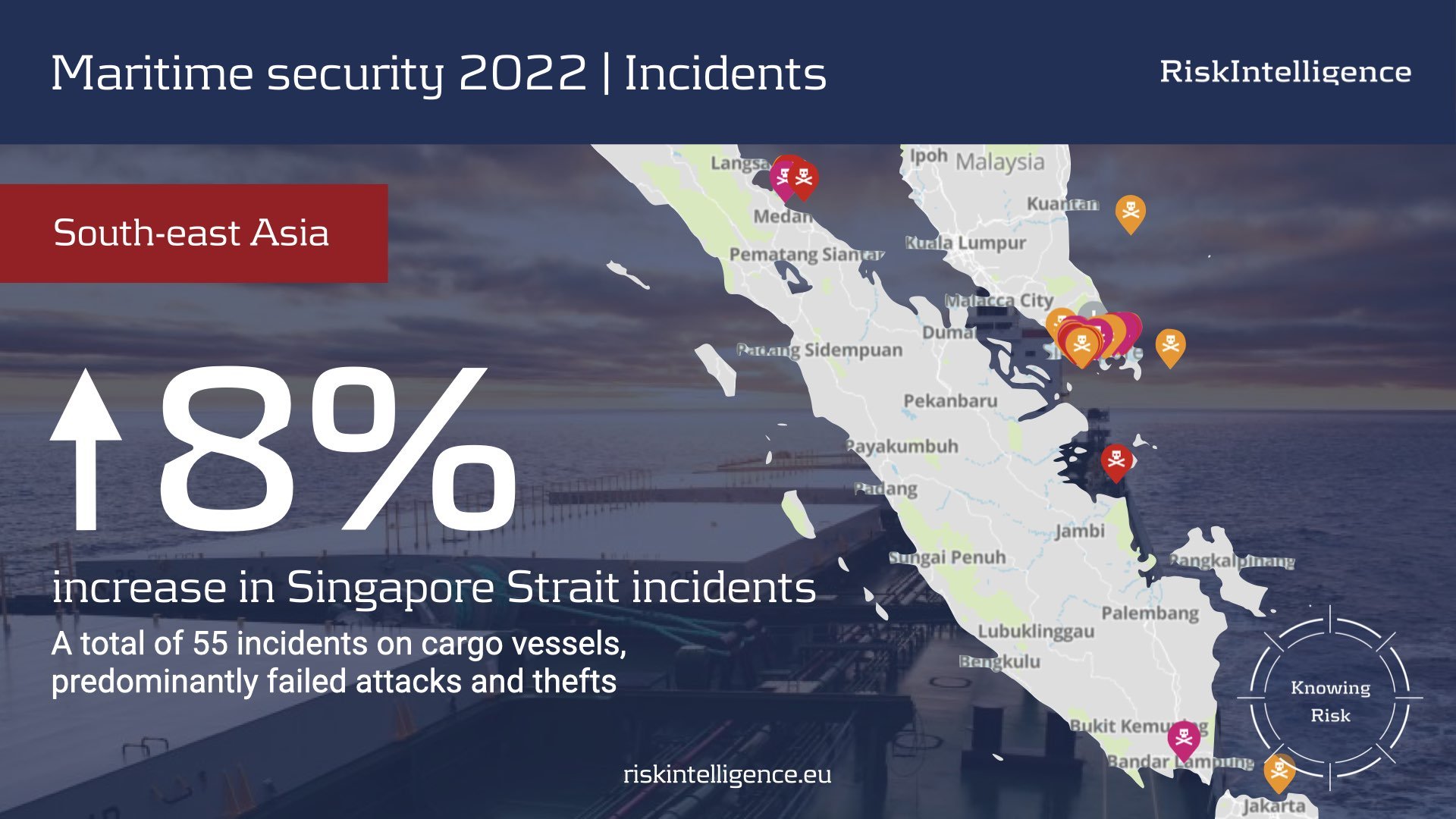
8% increase in Singapore Strait incidents
As the frequency of boardings declines in other parts of Southeast Asia, activity on the Singapore Strait was mixed. On one hand, the total number of incidents increased by 8%, however, on the other hand this increase is attributed to an increase in the number of failed attacks in which perpetrators disembarked the targeted vessels empty-handed. These failed attacks represent 55% of the total for the strait.
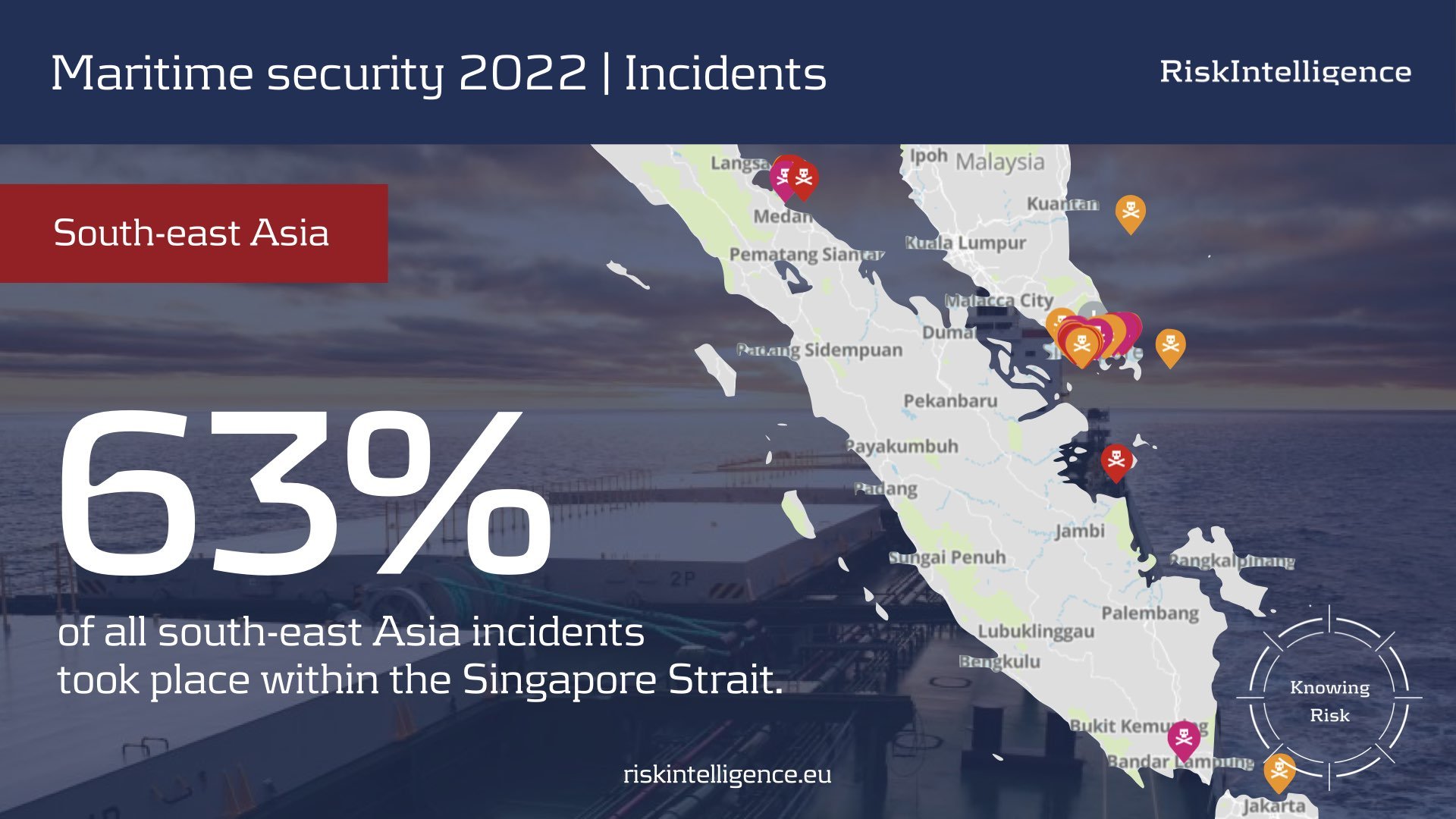
63% of all south-east Asia incidents took place within the Singapore Strait
As the frequency of boardings declines in other parts of Southeast Asia, activity on the Singapore Strait was mixed. On one hand, the total number of incidents increased by 8%, however, on the other hand this increase is attributed to an increase in the number of failed attacks in which perpetrators disembarked the targeted vessels empty-handed. These failed attacks represent 55% of the total for the strait.
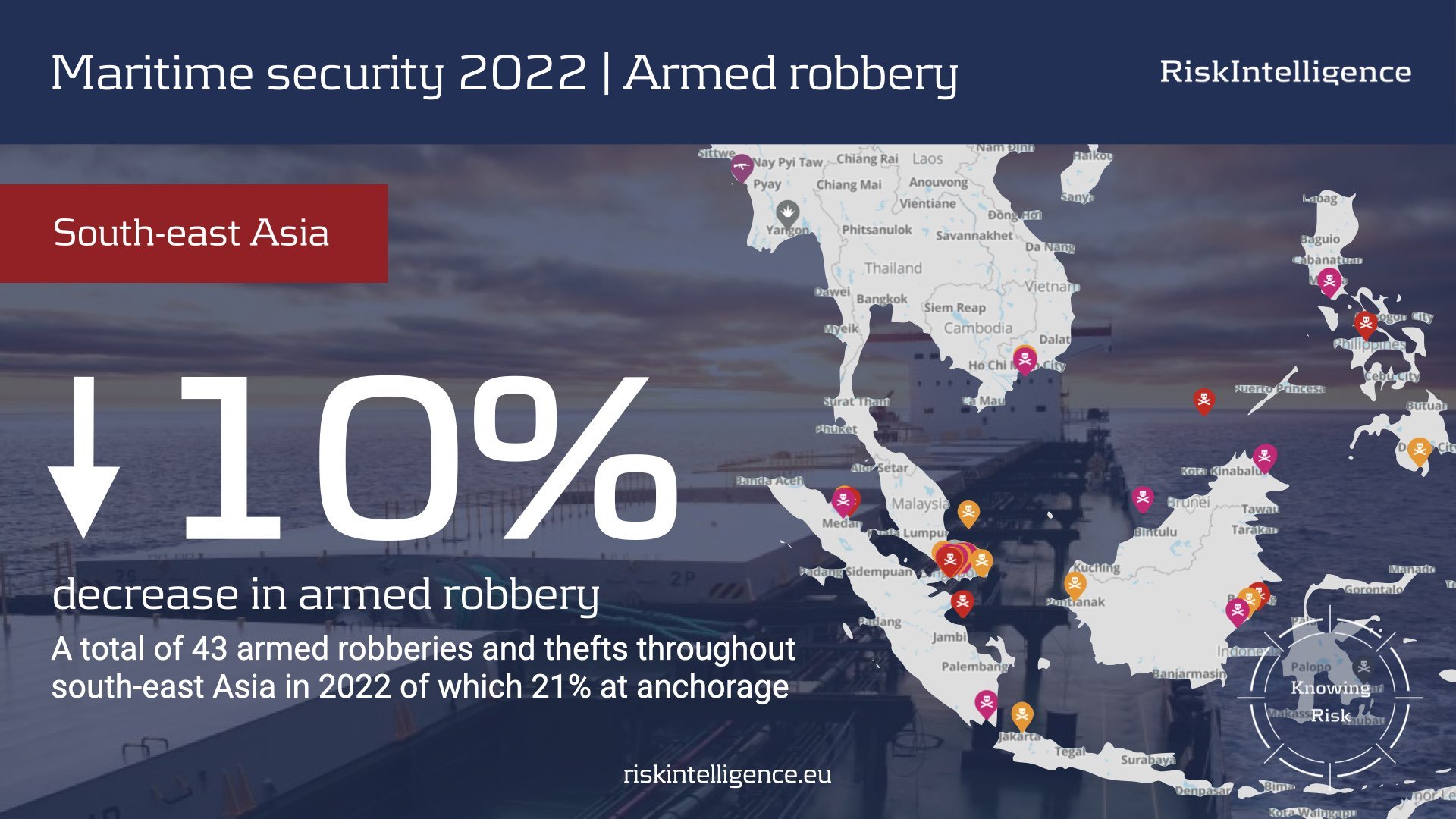
10% decrease in armed robbery in South-east Asia
During 2022 overall vessel boardings increased by 5%, although armed robberies decreased by 6% while thefts decreased by 13%. This is attributed to a significant 20% increase of failed attacks in which perpetrators left vessels empty-handed, in part due to enhanced vigilance of crew.
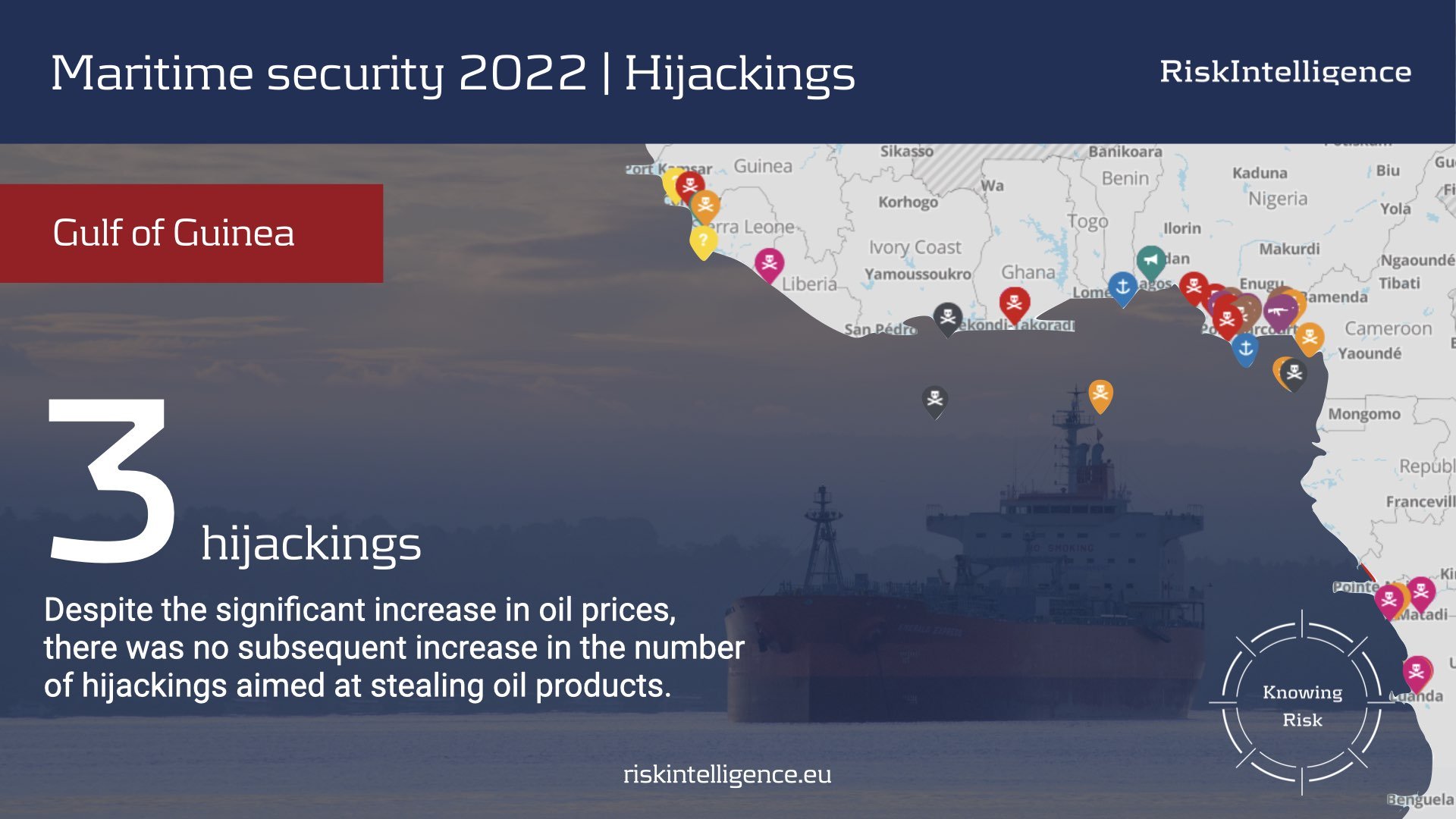
3 hijackings in the Gulf of Guinea in 2022
Merchant ships were hijacked in three incidents during 2022. One vessel was hijacked twice with refined oil products reportedly stolen on both occasions. Some observers have noted these incidents with concern, noting that such attacks could become more frequent again due to comparatively high oil prices.
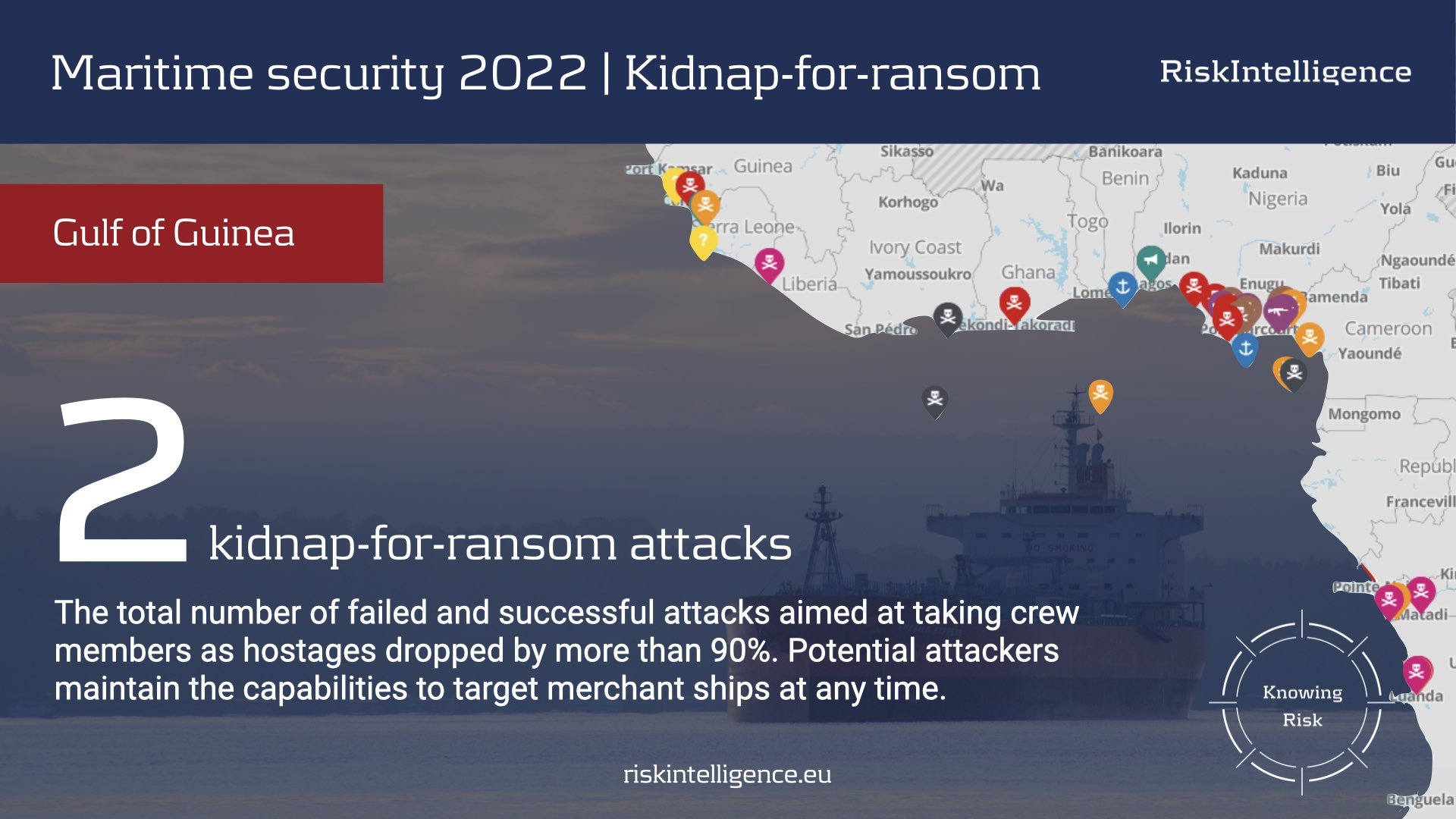
Gulf of Guinea - 2 kidnap-for-ransom attacks in 2022
The overall number of attacks aimed at kidnapping seafarers in the Gulf of Guinea, both successful and failed, fell to just two incidents last year after 22 such incidents in 2021. Considering the amount of other security challenges at sea, however, these figures should not be attributed to a sustainable improvement of maritime security.
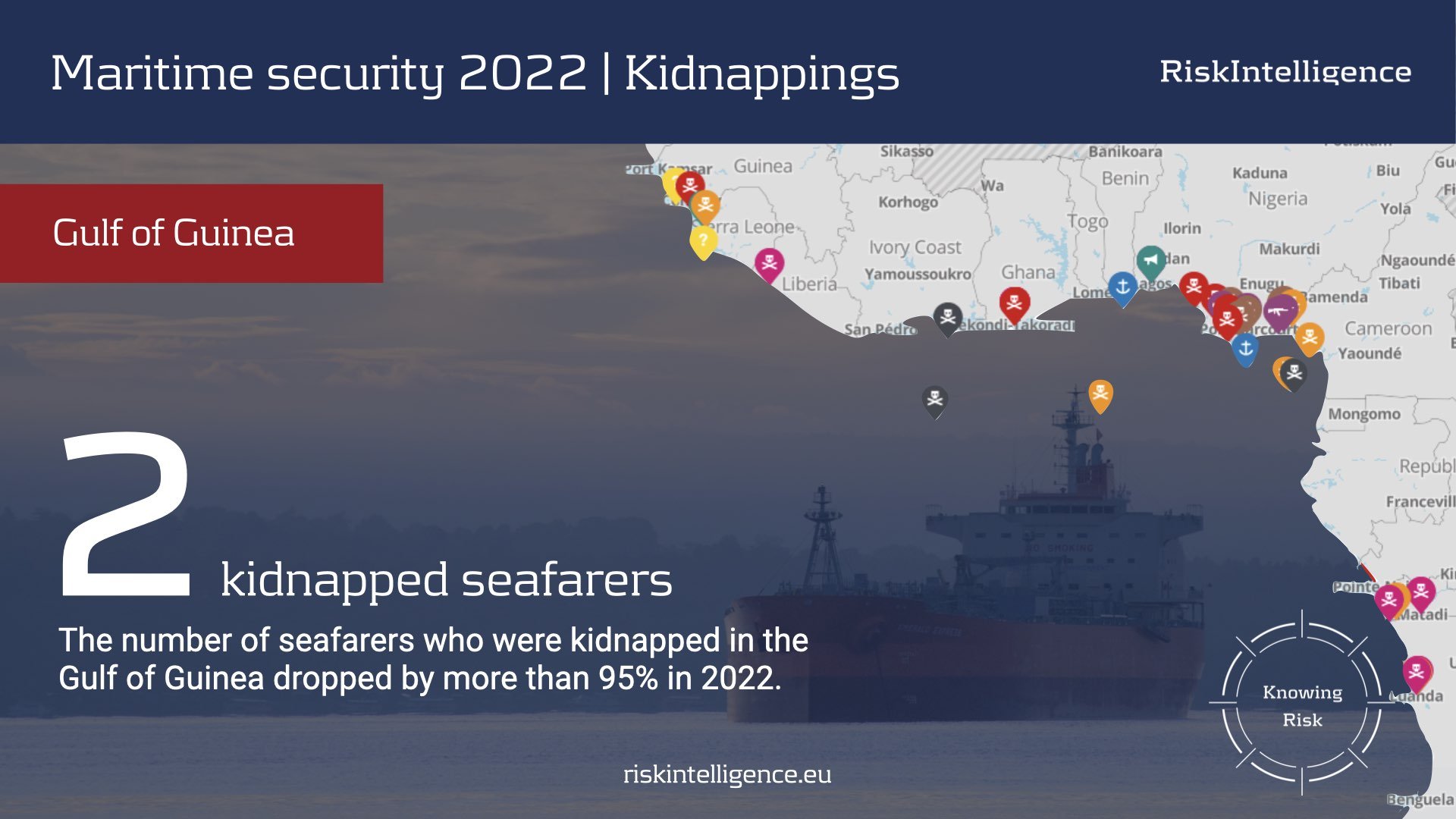
95% decrease in number of kidnapped seafarers in the Gulf of Guinea in 2022
The number of seafarers who were kidnapped in the Gulf of Guinea dropped by more than 95% in 2022 (from 68 hostages in 2021 to two hostages in 2022). While this reduction was a step in the right direction for crews on merchant ships operating in the region, it remains to be seen whether this improvement is sustainable. Vigilance and adherence to BMP West Africa are still vital precautions for operations in the Gulf of Guinea.
